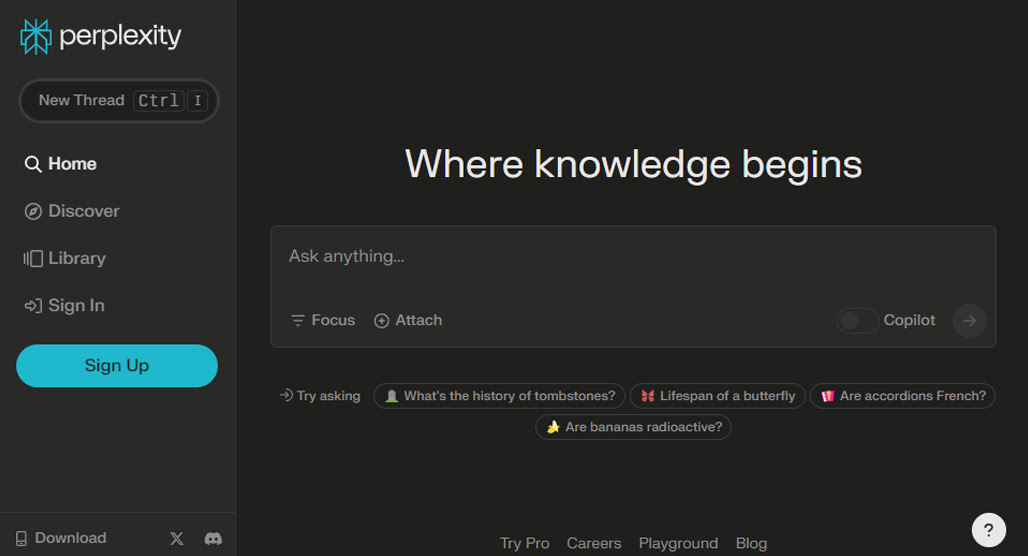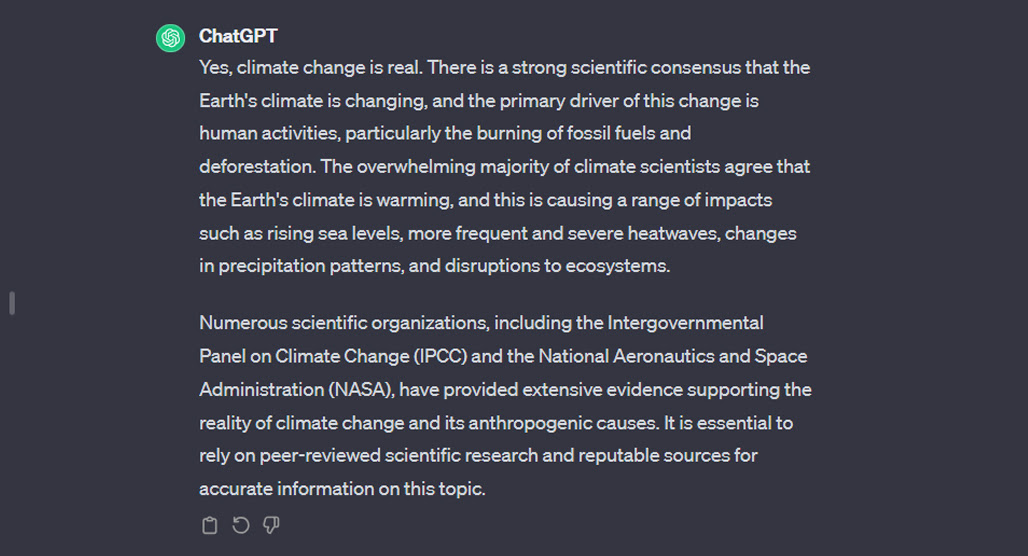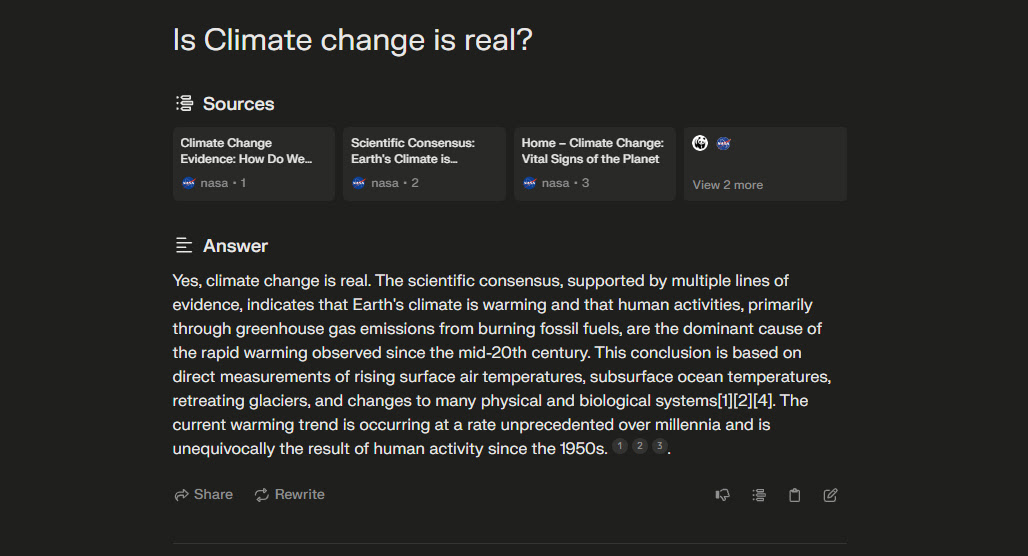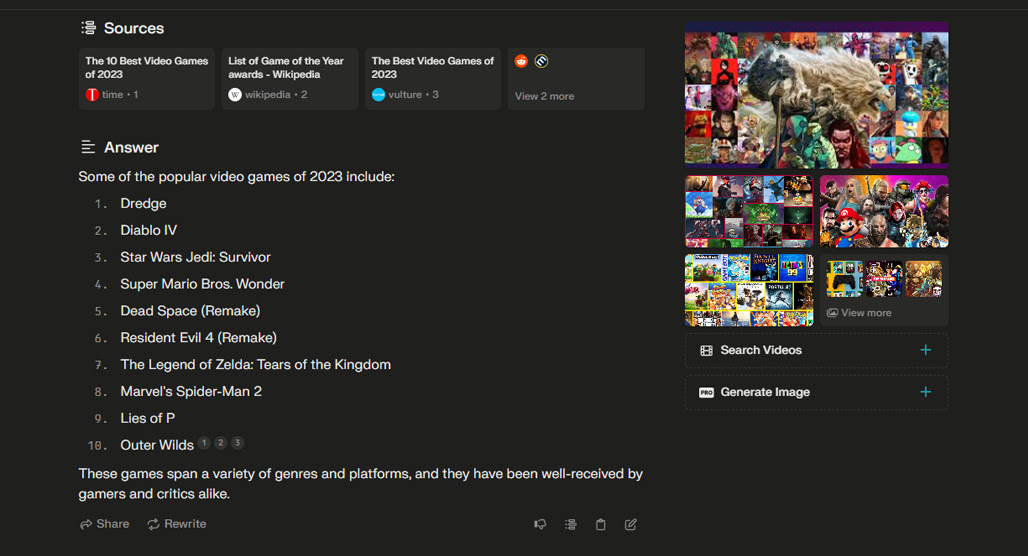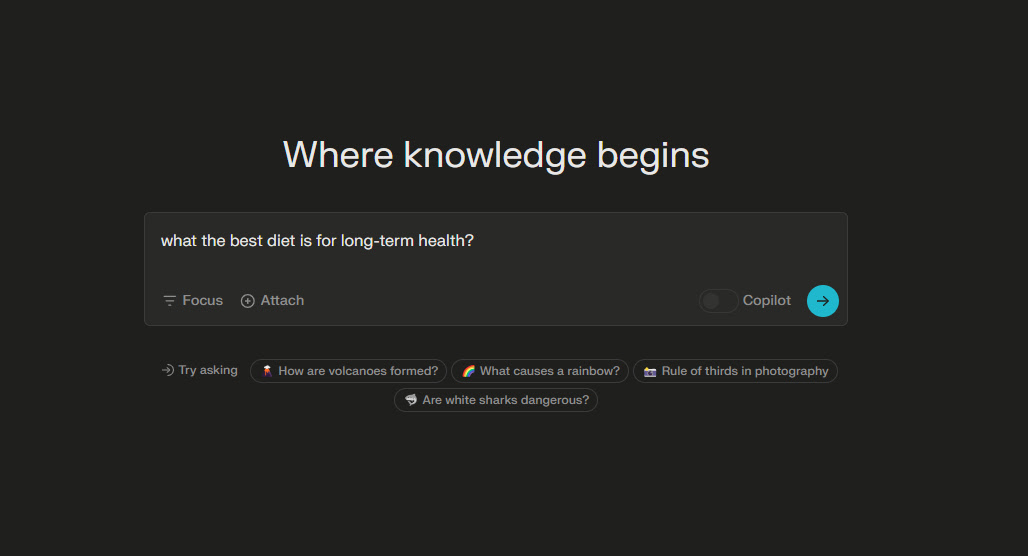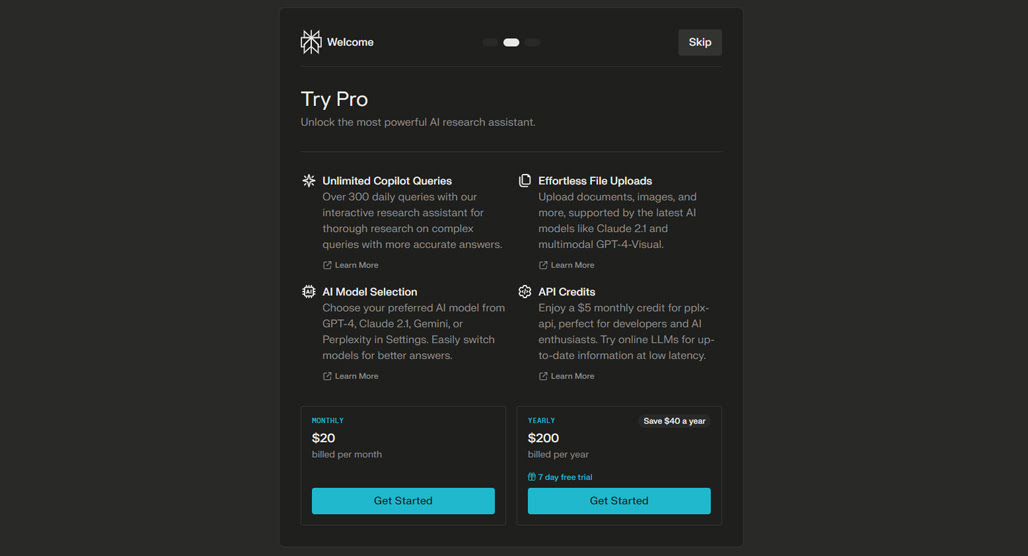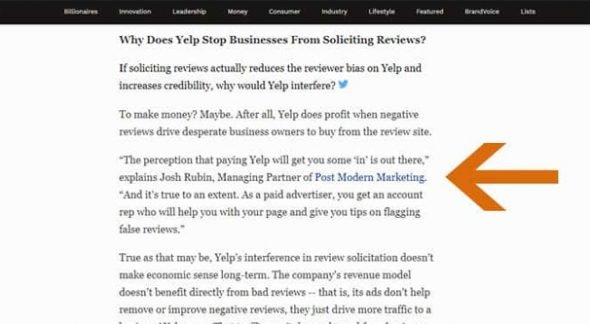How to Use Perplexity to Help You Write Better Blog Posts

The internet is currently packed full of AI assistance and AI-generation tools. They largely have the same purpose – to generate content – with various levels of assistance, different limitations, and a range of possible stopgaps to force your own voice and fact-checking.
I’ve mostly been against the use of AI in complete blog post generation. When you type a prompt into a GPT interface and ask it for a blog post, you’ll get something that resembles a blog post, but chances are it won’t have a good focus, a good thesis, or even a solid through-line. It may or may not be relevant or even accurate, and oftentimes, the content is – while not Copyscape-level stolen – basically no better than an article spinner taking pre-existing content.
That said, AI tools can be useful if you know what you’re doing with them. Largely, to me, that means three things.
- Scraping and parsing data and search results to extract common threads and nuggets of value.
- Generating topic and title ideas.
- Spinning up outlines and ideas for major topics to cover.
You won’t find me using an AI to generate whole paragraphs or blog posts, but more than once, I’ve had AIs suggest side topics that I hadn’t thought of but which ended up being useful to include. Really, it’s like having a partner working with you; you need to check their work and figure out how to integrate it into your own, but it can be useful.
Let’s look at a new tool that has been making waves, called Perplexity.
Enter Perplexity
Perplexity.ai is an AI tool that basically speeds up research for any given topic. It works fairly simply: you type in a query.
Perplexity checks search engines (they aren’t clear which sources they use, but it’s probably Bing) to find results related to your query. It then scans through those results and uses its language model access (GPT3 for the free accounts and GPT4 for paid accounts) to generate a concise, sourced answer to your query.
While you could take the text as-is and use it, it’s not exactly super unique, and it’s generally only a paragraph or two. The real use, to me, is to skip having to visit and load half a dozen or more search results, read through them, and come up with a consensus for what they all say.
Instead, Perplexity does it all for you and presents the information to you with citations.
The “with citations” part is the important part. If you choose to use the information in your own writing, you can:
- Click through to the source to verify that it says what the AI says it says.
- Use that link as a source in your own blog post.
Basically, it’s a quick way to summarize the information you’d get from doing a search and researching yourself, but it’s done faster and automatically using the AI system.
Perplexity initially pushed itself as an AI-powered search engine and alternative to Google or Bing. Since both Google and Microsoft have added their own AIs to their search engines, it seems that Perplexity has drawn back a little on that particular marketing tactic, and their dashboard is designed largely to resemble using ChatGPT directly. Since it’s just a GPT layer over top search results, you really already know what you’re getting into if you’ve spent any time playing with AI tools.
Perplexity vs. ChatGPT Compared
To give you an idea of how Perplexity works and how it can be more useful than just using ChatGPT for the same purpose, here’s a tangible example. I went to both services (on the free tier) and used the same query.
- Query: Is climate change real?
I used a simple query that has a factual answer from a variety of national and international sources as the top results in a Google search. It’s a softball query because all of those results are going to come to a single consensus.
Here’s the ChatGPT output:
“Yes, climate change is real. There is a strong scientific consensus that the Earth’s climate is changing, and the primary driver of this change is human activities, particularly the burning of fossil fuels and deforestation. The overwhelming majority of climate scientists agree that the Earth’s climate is warming, and this is causing a range of impacts, such as rising sea levels, more frequent and severe heat waves, changes in precipitation patterns, and disruptions to ecosystems.
Numerous scientific organizations, including the Intergovernmental Panel on Climate Change (IPCC) and the National Aeronautics and Space Administration (NASA), have provided extensive evidence supporting the reality of climate change and its anthropogenic causes. It is essential to rely on peer-reviewed scientific research and reputable sources for accurate information on this topic.”
Simple, and while it provides generalized sources by mentioning IPCC and NASA, it doesn’t have links or anything to do with specific pages.
Here’s Perplexity’s output to compare:
“Yes, climate change is real. The scientific consensus, supported by multiple lines of evidence, indicates that Earth’s climate is warming and that human activities, primarily through greenhouse gas emissions from burning fossil fuels, are the dominant cause of the rapid warming observed since the mid-20th century. This conclusion is based on direct measurements of rising surface air temperatures, subsurface ocean temperatures, retreating glaciers, and changes to many physical and biological systems[1][2][4]. The current warming trend is occurring at a rate unprecedented over millennia and is unequivocally the result of human activity since the 1950s[1][4].”
Citations:
[1] https://climate.nasa.gov/evidence/
[2] https://climate.nasa.gov/scientific-consensus/
[3] https://www.wwf.org.uk/updates/here-are-10-myths-about-climate-change
[4] https://climate.nasa.gov/what-is-climate-change/
[5] https://royalsociety.org/topics-policy/projects/climate-change-evidence-causes/basics-of-climate-change/
It’s essentially the same text but has citations for its statements.
Now, you can see that there are a few issues with this. Which ones do you spot?
Largely, to me, the biggest issue is relating to those citations. Specifically, out of five, only three of them are even used (#3 and #5 aren’t cited), and when you get down to it, that leaves you with three sources, all of which are the same site (NASA) which you could have clicked through yourself.
The real value of Perplexity isn’t in simple queries like this, though. It’s about the ways you can expand and dig deeper into a topic. You can generate longer results by altering a query to something like “What are ten definitive signs that climate change is real?” which can get you something that could be used as subheadings in a post, and you can dig deeper into each one of them as its own query. Perplexity also has related queries it suggests, which can be things like “What are the effects of climate change on wildlife?” or “What is the Paris Agreement, and how does it address climate change?”
And, of course, the paid version of Perplexity has more features, like their copilot, which can guide you to more in-depth and carefully crafted results. And with all AI generators, the depth and detail of your query have a huge impact as well. I’ve intentionally chosen a very basic query for a reason.
What Are the Benefits of Using Perplexity?
Perplexity can be very useful for whipping up the foundation you need to produce a high-quality blog post. Basically, it helps streamline one of the most tedious parts of content creation: reading all of the possible sources for a topic, stripping out the information you don’t care about (like CTAs, off-topic stories and anecdotes, and duplicate information), and building a full understanding of a topic.
Overall, Perplexity has a handful of tangible benefits for a content creator like myself.
It speeds up research tremendously. At least, it speeds up a particular kind of research. I do a lot of switching between widely varied topics, often topics I know about but haven’t looked into in a while. I usually need a quick refresher to put myself in the right mind space for working on a given topic. That might take me half an hour of poking through Google search results and reading content, but Perplexity can extract and summarize that key information in a few seconds, giving me a couple of paragraphs to read instead, cutting 20+ minutes off my work time.
It helps you stay up to date on faster-moving topics. There are some topics that don’t change much over time, but there are others where the most relevant, updated information might be desirable. Unfortunately, these are also the kinds of topics absolutely dominated by thin content and spam in the search results, and Google doesn’t seem to care much about fixing the problem. Perplexity can aggregate authoritative sources rather than clickbait sources and give you the most updated information available, with citations.
It can be a useful tool for outlining blog posts. Outlining a post lets you come up with the core facts and conclusions you want to reach, put things in a logical order, and figure out what you need to cover and what you don’t.
Perplexity won’t generate a perfect outline for you. What it can do, though, is give you the important facts and information you’d want to include. You might need to do some rearranging, trimming, or expanding of various sections, and you might need to go through your query a few times to get all the angles you’d want to cover, but it can help a lot and frequently reminds me to include details I otherwise might have forgotten.
Does Perplexity Have Drawbacks?
Of course. There are a few important drawbacks, including one I’ve alluded to already by using the basic, simple query.
The first is that Perplexity develops a consensus from the sources it finds. That’s fine for something with a factual answer. But what about something that can have multiple perspectives, different ways of viewing a subject, or even different conclusions entirely?
Very often, complex subjects viewed in different lights can have very different outcomes. For example, if you were to ask Perplexity what the best diet is for long-term health, you would get one recommendation, but it’d either be so generic as to be useless, or it would run counter to some study or another. The more nuanced a topic is, the less likely that the search results are going to have a firm consensus, and thus, the less useful Perplexity is for summarizing it for you.
Here’s that exact question as an example:
“The best diet for long-term health is one that is sustainable and focuses on high-quality, nutritious whole foods, mostly from plant sources, while avoiding processed foods, flours, sugars, and unhealthy fats. The Mediterranean diet, DASH diet, and the DASH diet are often recommended for their focus on fruits, vegetables, whole grains, and healthy fats, and have been shown to be sustainable and beneficial for overall health[1][2][3][5]. These diets are characterized by a high intake of fruits and vegetables, whole grains, pulses, and healthful fats from nuts, olive oil, and avocado[1]. It’s important to choose a diet that aligns with your lifestyle and food preferences to ensure long-term adherence and success[3].”
Citations:
[1] https://www.health.com/nutrition/longevity-diet
[2] https://www.health.harvard.edu/blog/weight-loss-for-life-the-dietfits-study-2018040913595
[3] https://www.healthline.com/nutrition/best-diet-plans
[4] https://www.everydayhealth.com/diet-and-nutrition/diet/us-news-best-diet-plans-mediterranean-dash-more/
[5] https://www.thehealthy.com/weight-loss/longterm-diets-mediterranean-dash/
Now, you can twist this into being useful by spinning off an article about different possible healthy diets and the differences between them, but it’ll take a lot more work than something with a firmer consensus.
The second issue is a more abstract problem, and it’s one that Google and Bing’s AI assistants also have: the more popular they become, the worse they get.
Here’s what I mean. When you go to Perplexity, Google Bard, or Microsoft Copilot, you can ask a question and get an answer without ever leaving Perplexity, Google, or Bing.
What happens to the websites that the information comes from?
They get less traffic. Less traffic means less monetization, less income, and less ability to be self-sustaining. Smaller sites become more vulnerable to being bought up and rolled into larger sites or just folding entirely. Larger sites see fringe topics underperforming and cut them off, dialing back to remain profitable as much as they can.
The end result is that fewer and fewer sources exist, it becomes harder and harder to succeed as a site owner, and the sites that do exist have less need for an AI to comb through them.
Ironically, in using AI search summarizers to create content, you devalue the content you create.
The third issue is more tangible, and it just comes down to price.
Perplexity’s free version is fine, but it’s nothing special, and you’re not getting any top-of-the-line features or even the latest LLM access. The pro version gets you the ability to choose between leading LLMs, use their copilot, and a few other advanced features.
But, at $20 per month or $200 per year, you’re paying a pretty hefty subscription when there are much better ways you could spend $20 per month to make better content.
Your Thoughts
In my mind, Perplexity is a decent enough tool for some basic use, but paying for it just doesn’t offer enough compared to better uses of that same money.
What about you, though? Are there any pro tips I should be using? Do you have a different perspective? Let me know!
Leave a Comment
Fine-tuned for competitive creators
Topicfinder is designed by a content marketing agency that writes hundreds of longform articles every month and competes at the highest level. It’s tailor-built for competitive content teams, marketers, and businesses.
Get Started
